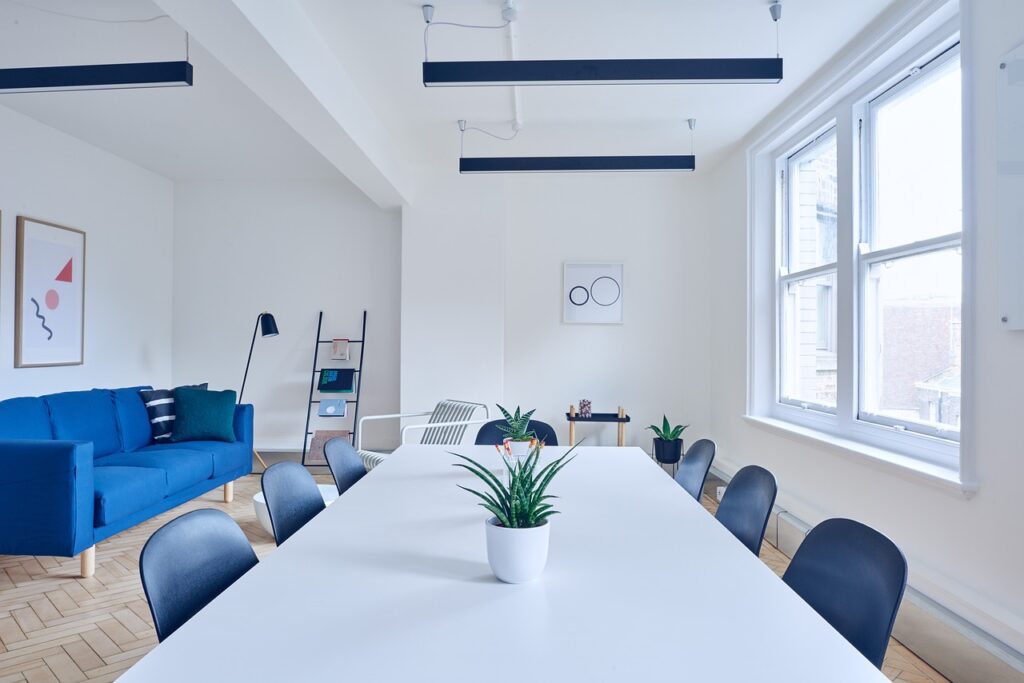To Share is to Show You Care!
Are you ready to create awe-inspiring interior design projects in 2023, all while mastering time management? We’ve got you covered! In this blog post, we’ll guide you through the process of achieving time mastery and infusing your projects with design magic. Whether you’re a professional interior designer or a DIY enthusiast, these tips and strategies will help you bring your vision to life on schedule and with style.
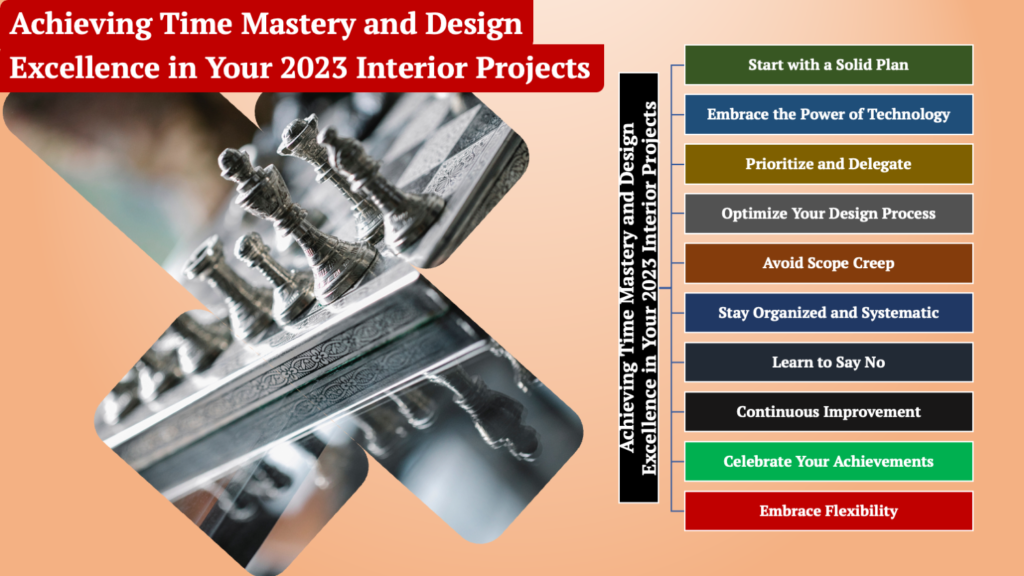
1. Start with a Solid Plan

1.1 Set Clear Objectives
Before embarking on an interior design project, define your goals and objectives. What do you want to achieve with this project? Is it a complete room transformation, an update, or a specific theme you want to convey? Having clear objectives will guide your decisions throughout the project.
1.2 Create a Project Schedule
Develop a detailed project schedule that outlines the timeline for various project phases. This should include tasks like planning, shopping for materials, execution, and final touches. Setting deadlines for each step ensures you stay on track and complete the project on time.
1.3 Budget Wisely
Allocate your time and resources efficiently. Consider the financial aspects of your project. What’s your budget for materials, labor, and any unexpected expenses? A well-planned budget helps prevent overspending and ensures your project stays within financial constraints.
2. Embrace the Power of Technology
2.1 Use Design Software
Modern interior design software offers a wide range of tools to help you plan and visualize your designs. These tools allow you to create 3D models, experiment with color schemes, and even see how different furniture items will fit into your space. Investing in such software can save time and enhance your design process.
2.2 Project Management
Tools: Project management apps help you keep track of project progress and deadlines. You can use these tools to create to-do lists, set reminders, and assign tasks to team members if you’re working with a team. This technology ensures everyone is on the same page and helps prevent missed deadlines.

3. Prioritize and Delegate

3.1 Identify Key Tasks
Determine the most critical tasks in your project. What needs to be completed first? By prioritizing tasks, you ensure that essential elements are addressed before less critical aspects.
3.2 Delegate When Appropriate
Don’t hesitate to delegate tasks when necessary. If you’re working on a large project or collaborating with others, delegate responsibilities to team members or professionals. Delegating can speed up the process and improve efficiency.
4. Optimize Your Design Process
4.1 Space Planning
Optimize space usage by ensuring that the furniture and decor you choose align with the functionality and aesthetics of the room. Effective space planning ensures that every inch of your space is used efficiently.
4.2 Material Selection
Selecting materials wisely is crucial. Consider not only the visual appeal but also the availability of materials. Choosing materials that are readily accessible can prevent delays in the project.
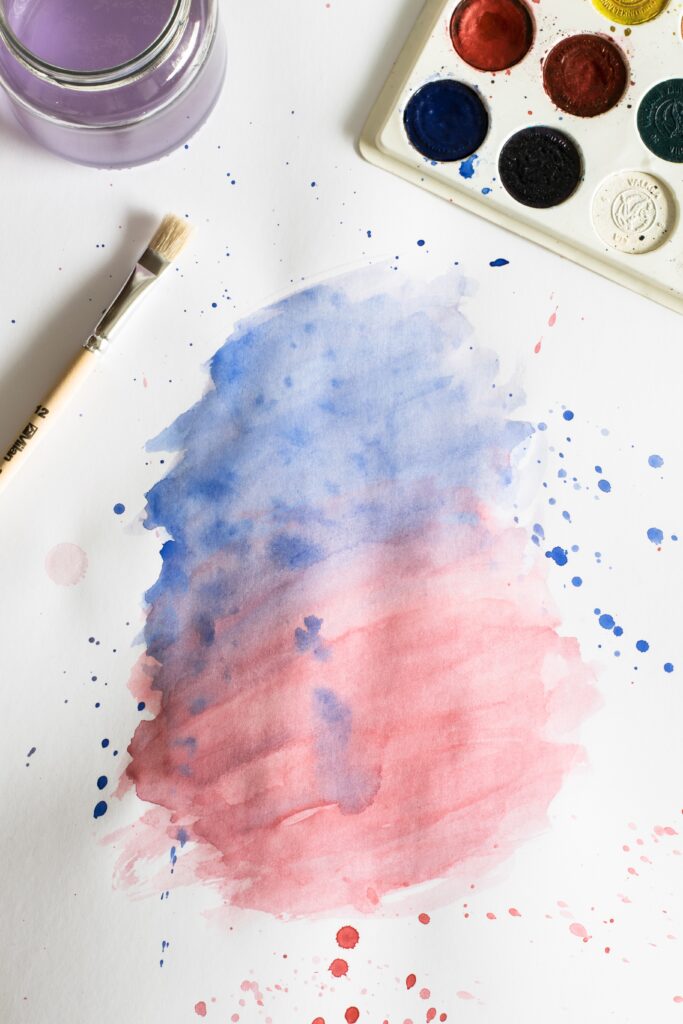
5. Avoid Scope Creep

5.1 Stick to the Plan
Once your project is underway, try to stick to the initial plan. Frequent changes in design can lead to scope creep, which can extend the project timeline and increase costs.
5.2 Communication
Effective communication is key to avoiding scope creep. Keep your project team and clients informed about project decisions and any potential changes. This transparency helps everyone stay on the same page.
6. Stay Organized and Systematic
6.1 Checklists
Create detailed checklists for each project phase. This can include items to purchase, tasks to complete, and deadlines to meet. Checklists keep you organized and ensure you don’t miss any essential steps.
6.2 Document Everything
Maintain records of all project decisions, including design choices and client communication. Documenting everything helps you track the project’s progress, reduces misunderstandings, and acts as a reference if issues arise.
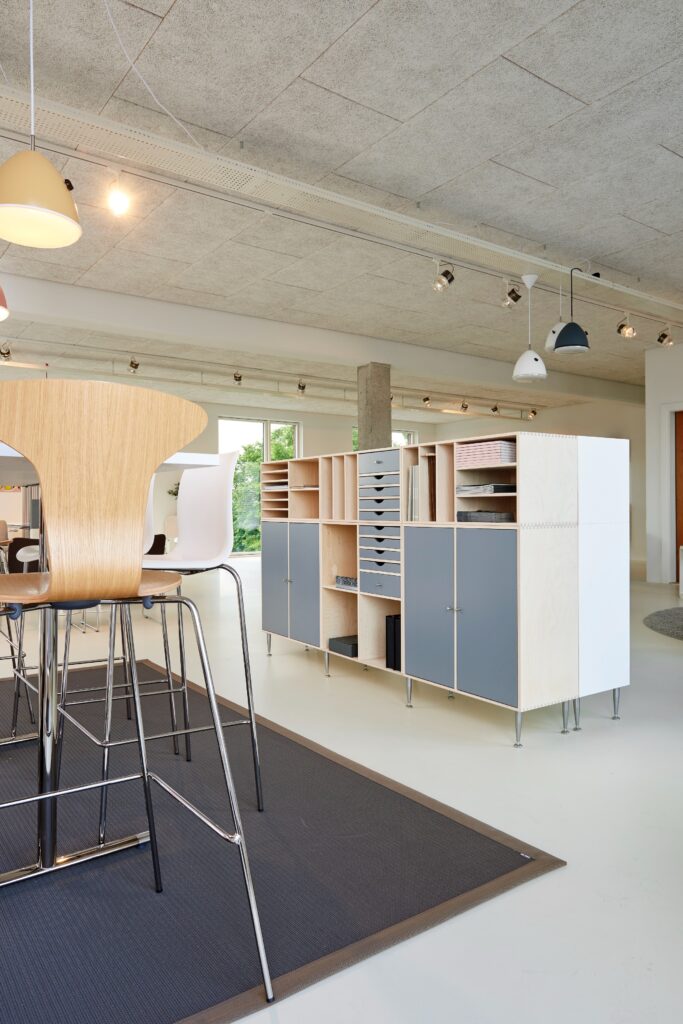
7. Learn to Say No

7.1 Select Projects Carefully
Be selective with the projects you take on. Ensure that they align with your expertise and resources. Taking on projects that are beyond your capabilities or interests can lead to frustration and delays.
7.2 Avoid Overcommitting
Don’t take on more projects than you can handle. Overcommitting can lead to burnout, reduced quality of work, and missed deadlines. Focus on delivering your best work on a manageable number of projects.
8. Continuous Improvement
8.1 Education
Keep yourself updated with the latest interior design trends and project management techniques. Attend workshops, webinars, or conferences to enhance your skills and knowledge.
8.2 Feedback
Seek feedback from clients and colleagues to improve your design and project management processes. Learning from past projects allows you to refine your approach and prevent repeating mistakes.
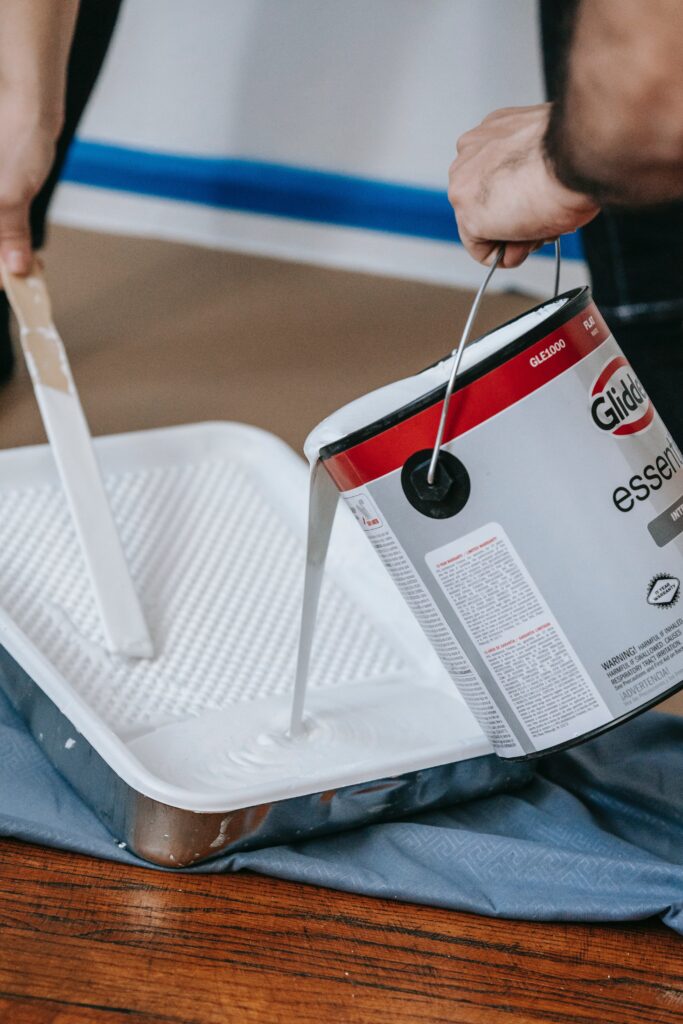
9. Celebrate Your Achievements

9.1 Acknowledge Milestones
Recognize and celebrate milestones during your project. Completing a phase, receiving positive client feedback, or achieving a design breakthrough are all accomplishments worth acknowledging. Celebrating milestones boosts motivation.
9.2 Client Satisfaction
A satisfied client is a testament to your time mastery and design excellence. Happy clients are more likely to recommend your services and collaborate with you again in the future.
10. Embrace Flexibility
10.1 Adapt to Change
Interior design projects may encounter unexpected developments. Stay flexible and prepared to adapt to changes in the project scope, timeline, or design direction.
10.2 Stay Open to Inspiration
Sometimes, design magic occurs when you’re open to new ideas. Be open to inspiration, whether it comes from your clients, team members, or the environment. Creativity can sometimes flourish when you allow for flexibility in your design process.

Conclusion
By following these strategies and mastering time management, you’ll have the tools to create design magic in your interior projects in 2023. Balancing efficiency and creativity, you can bring your vision to life on schedule and with style. 🕒✨
Frequently Asked Questions
Q1: What is time management in interior design?
A: Time management in interior design involves efficiently allocating and scheduling tasks and activities to complete a project within the specified timeframe. It ensures that designers meet deadlines, avoid delays, and maintain a structured workflow.
Q2: How do you project manage an interior design project?
A: Project management in interior design includes planning, executing, and controlling all project activities. It involves setting clear objectives, creating schedules, delegating tasks, monitoring progress, and ensuring that the project aligns with the client’s vision and budget.
Q3: How can interior designers save time?
A: Interior designers can save time by setting clear project goals, using technology for design and project management, delegating tasks, staying organized, and avoiding scope creep. Effective communication and proper planning are also essential time-saving strategies.
Q4: Why are plans and timelines important in interior design?
A: Plans and timelines are crucial in interior design to establish a structured workflow, set milestones, and prevent project delays. They help designers and clients track progress, manage expectations, and ensure that the project is completed on time.
Q5: Why is time management important in design?
A: Time management is essential in design to ensure that projects are delivered promptly and efficiently. It helps maintain organization, meet client expectations, and balance creativity with practicality.
Q6: What are the 4 types of time management?
A: The four types of time management commonly recognized are:
- Task-based time management
- Project-based time management
- Goal-based time management
- Priority-based time management
Q7: Why is project management important in interior design?
A: Project management is vital in interior design to streamline tasks, allocate resources, track progress, and maintain project quality. It ensures that projects are executed smoothly, meet deadlines, and stay within budget.
Q8: What are the 7 steps to project planning success for project managers?
A: The 7 steps to project planning success for project managers are:
- Define project objectives.
- Create a detailed project plan.
- Allocate resources.
- Develop a project schedule.
- Assign tasks to team members.
- Monitor progress and make adjustments.
- Evaluate project outcomes and lessons learned.
Q9: What are the 7 steps to effective project design?
A: The 7 steps to effective project design typically include:
- Project initiation.
- Needs assessment.
- Planning.
- Design and development.
- Implementation.
- Monitoring and evaluation.
- Project closure.
Q10: What is the biggest problem in interior design?
A: One of the significant challenges in interior design is addressing client expectations and ensuring that the design aligns with their vision, budget, and practical needs. Communication and client satisfaction are often key concerns.
Q11: How do interior designers solve problems?
A: Interior designers solve problems by identifying issues, researching solutions, and using their creativity and expertise to propose design solutions that address the challenges. Effective communication with clients and collaboration with other professionals are also critical in solving design problems.
Q12: How do you keep up with industry changes in interior design?
A: Staying updated with industry changes in interior design involves continuous learning, attending industry events, reading design publications, joining professional organizations, and networking with other designers. It’s essential to be aware of emerging trends and new technologies.
Q13: What are the 4 steps you should take when planning to decorate a project?
A: When planning to decorate a project, the four key steps to follow are:
- Define the project goals and objectives.
- Create a design plan, considering space, style, and budget.
- Select materials, furniture, and decor items.
- Implement the design plan, ensuring that it aligns with the project’s timeline and budget.
Q14: How long does it take an interior designer to complete a project?
A: The duration to complete an interior design project varies significantly depending on the project’s scope and complexity. Small projects may take a few weeks, while larger, more intricate projects can extend to several months.
Q15: What are the stages of an interior design project?
A: The stages of an interior design project typically include:
- Initial client consultation and project definition.
- Space planning and concept development.
- Design development and selection of materials and furnishings.
- Construction or implementation phase.
- Project completion, including final touches and client walkthrough.
- Project handover and client satisfaction assessment.
The Informed Minds
I'm Vijay Kumar, a consultant with 20+ years of experience specializing in Home, Lifestyle, and Technology. From DIY and Home Improvement to Interior Design and Personal Finance, I've worked with diverse clients, offering tailored solutions to their needs. Through this blog, I share my expertise, providing valuable insights and practical advice for free. Together, let's make our homes better and embrace the latest in lifestyle and technology for a brighter future.

